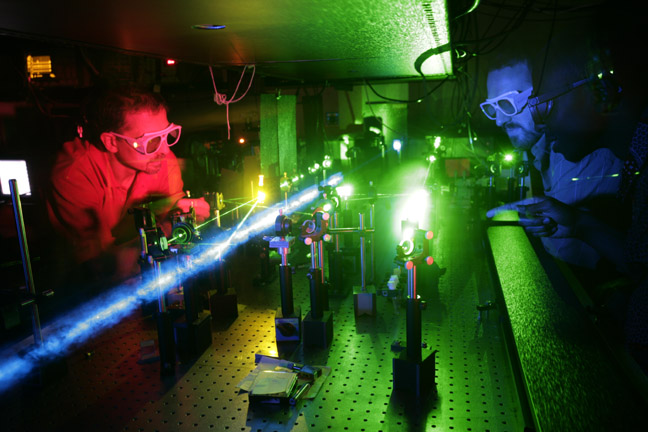(Written on July 1, 2009 but uploaded later)
I’m writing this at 30,000 feet on the way from San Francisco to London where the World Conference of Science Journalists is taking place, although I’ll only catch the last day of that meeting on the way to other places. Being on the plane reminds me of how much flight plays a role in the lives of scientists. They fly so much because they need the face-to-face contact that builds the relationships and eases the communication that moves science forward. Here are a few stories about scientists I know and their relationships to planes and air travel.
A. I’d like to invent a device that one particular colleague could wear on his lapel, and he always has lapels, that shows the current update of how many miles he has flown this year. It’s not possible to have a conversation with him that doesn’t include some proud declaration of how miles he has accrued. The device would automatically interrogate his frequent flyer account, grab the latest number of miles, and perhaps proclaim in glowing ultra-bright LEDs, “I’m 178,452 miles douchier than last year”. He’s not alone in this behavior and there would probably be a market for this device, even with such a self-immolating message. I wonder if he’s tweeting his mileage status.
B. Another colleague is so concerned about the energy costs of travel for science that he is doing everything he can to reduce his personal energy consumption. He has charts and data, all available online of course, and has taken to not eating meat for periods–because of the energy savings–started cycling, traveling by bus or train to other cities for conferences instead of driving or flying. He was recently faced with the need to fly from the United States to the United Kingdom for a job interview and needed to find some large energy savings to be able to meet his energy consumption goals. At a recent conference he asked if anybody in the audience would be prepared to make behavioral changes to save some energy which they would effectively donate to his cause. I realize as I write this that he was essentially building a personal cap and trade system for energy consumption. I admire his discipline and know I couldn’t replicate it. But can his dedication and approach scale up to larger communities?
C. A prominent physics blogger writes at length about identifying the very best seat on each model of plane that he regularly boards to fly between the United States and Europe. He’ll explain why this seat makes such a difference to his flying experience, and is close to obsessive about getting that particular seat. Of course, he won’t tell you which seat it is and won’t leave quite enough information for you to deduce which it is, in fear of somebody else following his plan and grabbing that seat before him.
D. Another colleague first experienced the online wi-fi network aboard a major carrier. What did he do with it? He called into a weekly videoconference that his colleagues were in. Whereas most scientists see a nine hour flight as a chance to get some work done without interruption, he jumped right back into the collaborative research he’d be doing 30,000 feet lower.
E. That same guy berates his graduate students if they ever need to check luggage. Checking luggage introduces inefficiency into travel that they ought to be smart enough to avoid. The frequent flyer I mentioned above feels a personal disappointment if he gets to the end of a trip and hasn’t worn every item in his bag precisely once. Make sure you don’t stagger near him with an overfull cup of coffee because you could really wreck his day with one small slip.
Each of us has behaviors in flying, although I often see scientists configuring their flight environments to make sure they make their work lives as efficient as possible. That’s fair enough, but now that I’m at the end of this essay, I’m going to pull out a book that has nothing to do with work, try to find a way to put my feet, if not up, somewhere that my legs won’t cramp over the next eight hours, and try to get some sleep, because I don’t seem to take quite as much pride in being jetlagged as so many of my colleagues.


